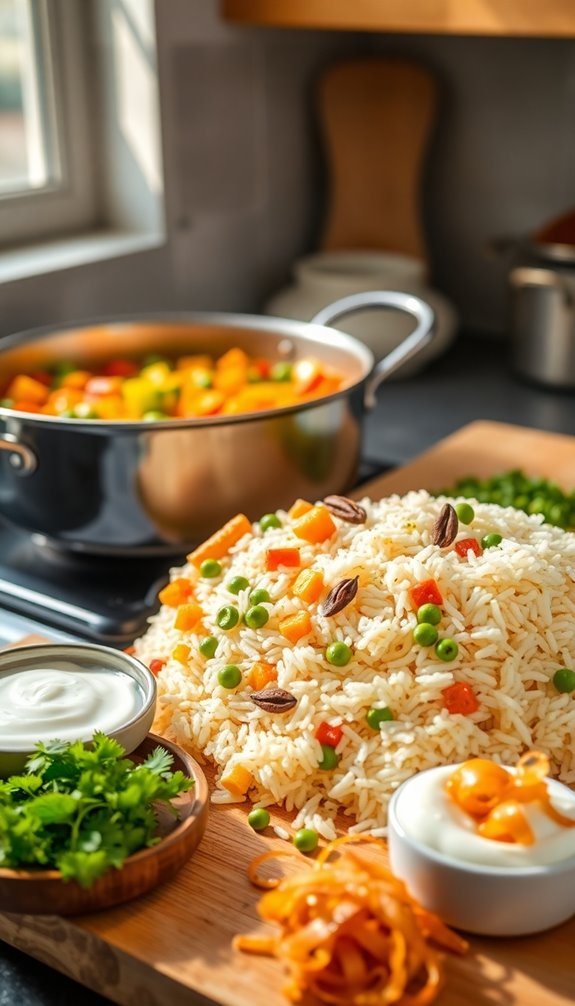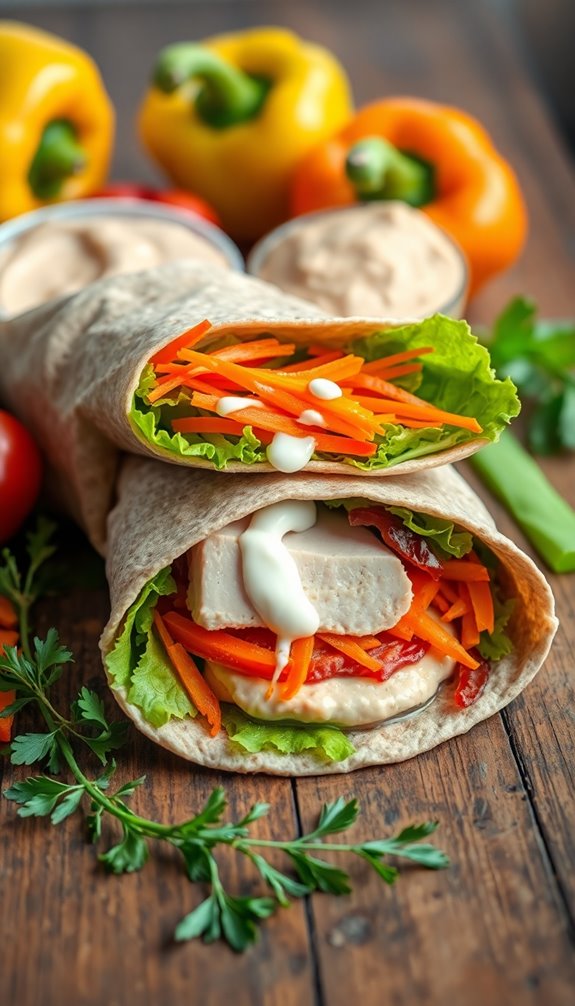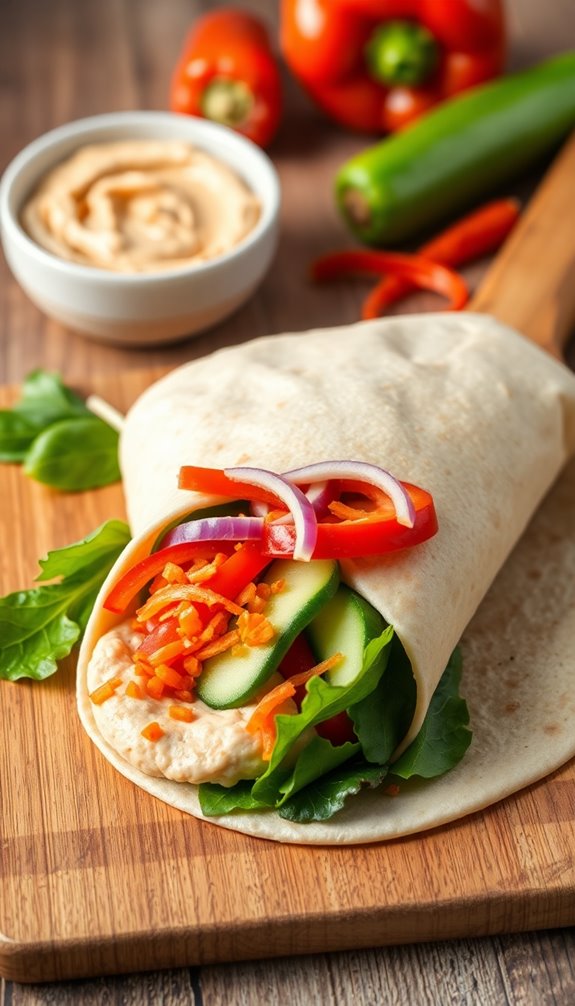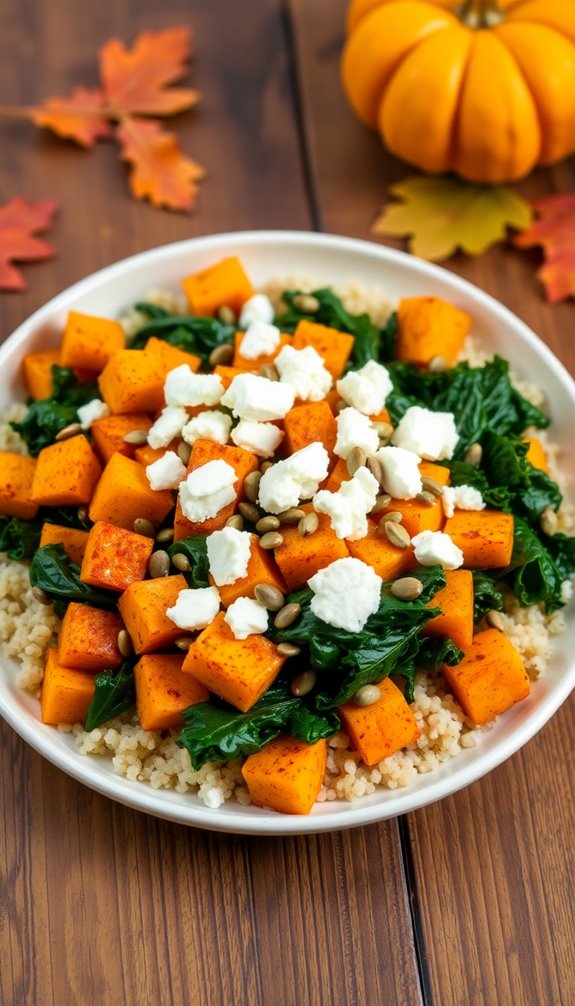If you're looking to explore the vibrant world of Indian cuisine, you can't miss out on Vegetable Biryani. This aromatic dish offers a delightful blend of basmati rice, mixed vegetables, and a medley of spices that create a rich tapestry of flavors. It's not just a meal; it's an experience waiting to unfold. Curious about how to make this culinary masterpiece at home? Let's immerse ourselves in the details.
Recipe Tips and Tricks
- Try Vegetable Biryani, a colorful and nutritious dish made with basmati rice and mixed vegetables, layered with aromatic spices.
- Sauté cumin seeds, cloves, and cardamom for a fragrant base before adding onions and ginger-garlic paste.
- Incorporate a variety of seasonal vegetables like carrots, peas, and bell peppers for added flavor and nutrition.
- Serve with raita and garnish with cilantro and mint for a refreshing contrast to the spices.
- Experiment with different legumes and grains to enhance protein content and create a balanced vegetarian meal.
How To Make It – Recipe

To prepare a delightful Indian vegetarian lunch, start by gathering fresh ingredients that will enhance the flavors of your meal. This recipe highlights a classic dish known as Vegetable Biryani, a fragrant rice dish that's colorful, nutritious, and packed with spices. The combination of basmati rice, assorted vegetables, and aromatic spices won't only satisfy your taste buds but also provide a wholesome and fulfilling meal. Delicious Indian lunch ideas can inspire you to create a variety of flavorful dishes.
The cooking process involves layering the rice with sautéed vegetables and spices, allowing the flavors to meld beautifully. This dish is versatile, so feel free to experiment with different vegetables based on your preference or what's in season. The key to a perfect biryani lies in the balance of spices and the cooking method, ensuring that the rice remains fluffy while absorbing all the flavors.
Ingredients:
- 1 cup basmati rice
- 2 cups mixed vegetables (carrots, peas, beans, bell peppers)
- 1 large onion, thinly sliced
- 2 tomatoes, chopped
- 2-3 green chilies, slit
- 1 tablespoon ginger-garlic paste
- 1/2 cup yogurt
- 2 tablespoons biryani masala
- 1 teaspoon cumin seeds
- 2-3 whole cloves
- 1-2 cardamom pods
- 1 cinnamon stick
- 3 tablespoons oil or ghee
- Salt, to taste
- Fresh cilantro and mint leaves, for garnishing
- 2-3 cups water
In a large pot, heat oil or ghee and add cumin seeds, cloves, cardamom, and cinnamon. Once they sizzle, add the sliced onions and sauté until golden brown. Stir in the ginger-garlic paste and green chilies, cooking until fragrant.
Add the chopped tomatoes and mixed vegetables, cooking until the vegetables soften. Mix in the yogurt and biryani masala, followed by rinsed basmati rice. Pour in the water and add salt to taste. Stir gently to combine, then cover the pot and let it cook on low heat for about 20 minutes, or until the rice is fully cooked and fluffy.
Garnish with chopped cilantro and mint leaves before serving. When making Vegetable Biryani, it's crucial to avoid overcooking the rice; it should be tender yet separate. You can also add a splash of lemon juice just before serving for a revitalizing twist.
For extra richness, consider adding fried onions or nuts on top. Adjust the spice levels according to your taste, and feel free to serve this dish with a side of raita (yogurt sauce) for a cooling complement to the spices. Enjoy your delicious homemade Indian vegetarian lunch!
Cooking Steps
To create a delicious Indian vegetarian lunch, start by preparing all your ingredients for a smooth cooking process. Sauté your spices until they're fragrant, filling your kitchen with mouth-watering aromas. Then, you'll add in the vegetables and lentils, letting them simmer together while you adjust the seasoning to your taste. Incorporating healthy meal ideas into your lunch can elevate its nutritional value and flavor.
Step 1. Prepare the Ingredients First
Preparing the ingredients is an essential step in crafting a delicious Indian vegetarian lunch. Start with chopping fresh vegetables like bell peppers and carrots, measuring spices, and rinsing lentils.
This ingredient preparation not only streamlines your cooking but also enhances your meal planning. Having everything ready lets you focus on creating vibrant flavors, ensuring a satisfying dining experience for everyone.
Step 2. Sauté Spices Until Fragrant
Heat a pan over medium flame and add a splash of oil, watching as it shimmers.
Toss in your favorite spice combinations—cumin, coriander, or mustard seeds—and let them sizzle. Soon, the air fills with warmth and fragrance.
Add aromatic herbs like curry leaves or cilantro, stirring gently to release their essence. This step creates a flavorful base for your dish!
Step 3. Add Vegetables and Stir-Fry
Once the spices have released their delightful aromas, it's time to add your chopped vegetables to the pan.
Use stir fry techniques to guarantee even cooking; toss in vibrant combinations like bell peppers, carrots, and broccoli.
Keep the heat high and stir frequently, allowing the vegetables to retain their crunch while absorbing those aromatic flavors.
Enjoy the colorful, healthy medley!
Step 4. Add Lentils and Simmer
As you incorporate the rinsed lentils into your vegetable medley, the dish transforms into a hearty and nutritious delight.
Choose from various lentil varieties, like red or green, to enhance texture and flavor.
Employ cooking techniques such as simmering, allowing the lentils to absorb the vibrant vegetable juices.
This process melds the ingredients, creating a comforting and wholesome meal you'll love.
Step 5. Adjust Seasoning to Taste
While your lentils and vegetables simmer together, it's essential to taste and adjust the seasoning to guarantee the dish is bursting with flavor.
Consider your taste preferences and add salt, pepper, or spices gradually, stirring well. This will help you achieve the perfect flavor balance.
Don't hesitate to experiment, as each adjustment brings you closer to a delicious, satisfying meal.
Substitution Suggestions
If you find yourself missing a key ingredient for your Indian vegetarian lunch, don't worry—there are plenty of simple substitutions you can make.
Consider ingredient swaps like chickpeas for lentils or coconut milk for yogurt. These choices not only maintain texture but also provide flavor enhancements, ensuring your dish remains delicious and satisfying.
Additionally, using vegetarian protein sources like tofu or tempeh can elevate your meal's nutritional value. Experiment to discover your favorite combinations!
Serving Suggestions
To elevate your Indian vegetarian lunch experience, consider pairing your dish with traditional accompaniments that enhance both flavor and presentation.
Use vibrant plating techniques to create an inviting look. Serve with fragrant basmati rice, flavorful naan, or colorful side dishes like tangy pickles and cooling raita. Incorporating delicious Indian recipes will not only complement your meal but also delight the eyes and palate. Enjoy every bite!
Make-Ahead and Storage
Planning ahead can make your Indian vegetarian lunch not only easier but also more enjoyable.
With effective meal prep, you can cook in batches, allowing flavors to meld beautifully. Store your dishes in airtight containers for ideal food storage, keeping them fresh for days.
Label your containers with dates to guarantee you use them timely, making lunchtime convenient and delicious every day! Additionally, incorporating healthy lunch recipes can help you maintain a balanced diet while enjoying diverse flavors.
Nutrition Facts(per serving)
Each serving size is packed with vibrant vegetables, legumes, and spices, offering numerous nutritional benefits. You'll enjoy a good balance of protein, fiber, and essential vitamins, ensuring your meal nourishes both body and mind. Embrace this wholesome dish for a satisfying, healthy experience! Additionally, this meal can be tailored to suit various preferences, making it a versatile choice for delicious vegetarian lunch ideas.
Final Thoughts
While enjoying your Indian vegetarian lunch, you might find yourself reflecting on the vibrant flavors and nourishing ingredients that make this meal a true delight.
Each dish holds cultural significance, showcasing the diversity of Indian cuisine. You'll appreciate the meal variety, from spicy curries to fresh salads, each bite connecting you to a rich heritage that celebrates plant-based eating in a delightful way. Additionally, the use of nutritious ingredients ensures that every meal is not only delicious but also beneficial for your health.
Recipe FAQs
What Are Common Spices Used in Indian Vegetarian Dishes?
Imagine a painter's palette; Indian spices like cumin, coriander, turmeric, and mustard seeds create vibrant regional variations. With diverse cooking techniques, you'll transform simple ingredients into masterpieces, awakening your taste buds to a world of flavor.
Can I Use Frozen Vegetables Instead of Fresh Ones?
Absolutely, you can use frozen vegetables! They're convenient and often retain nutrients. Just make slight recipe adjustments, like reducing cooking time, to guarantee they cook evenly while maintaining that vibrant flavor and texture you love.
How Can I Make the Dish Spicier?
Did you know that over 80% of people prefer their dishes spicier? To amp up the heat levels, try adding spice blends like garam masala or chili powder. You'll instantly elevate your dish's flavor!
Are There Any Gluten-Free Options for This Recipe?
You can use gluten-free grains like quinoa or rice, and alternative flours such as almond or chickpea flour. These options not only keep the dish gluten-free but also add unique flavors and textures. Enjoy experimenting!
What Drinks Pair Well With Indian Vegetarian Meals?
You might think pairing drinks with spicy dishes is tricky, but regional drinks like mango lassi or masala chai balance spice blends beautifully. They enhance flavors and keep your meal invigorating and satisfying. Give them a try!







